The 20 cities where you're most likely to meet a millionaire today
Millionaire metropolises
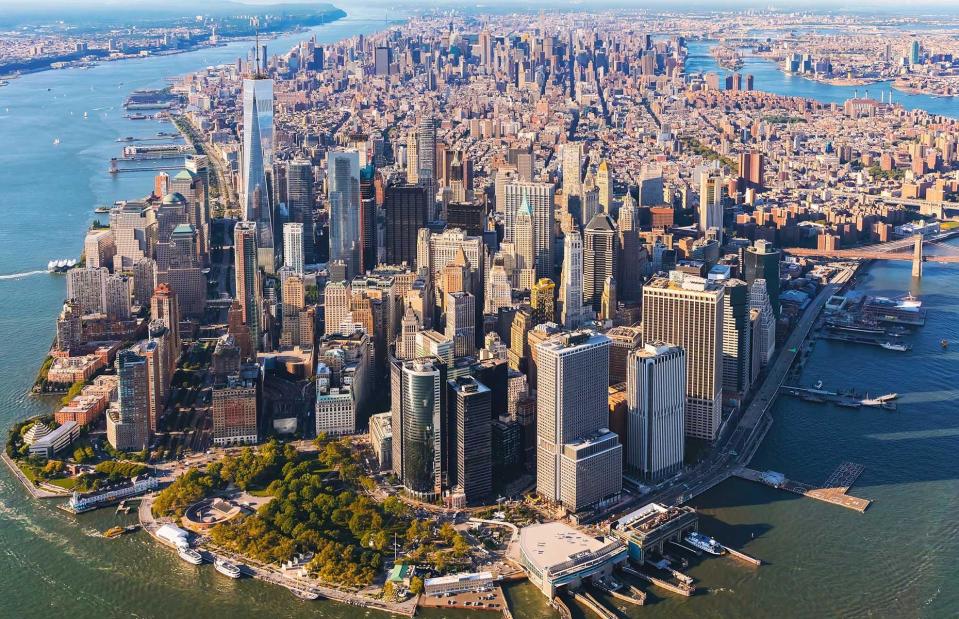
TierneyMJ/Shutterstock
Picture a city that's rolling in money and the odds are you'll imagine the glittering lights of Las Vegas or Monaco.
But some of the world's richest metropolises might just surprise you. Using the latest data collated by Henley & Partners and New World Wealth, we've ranked the world cities with the highest percentage of ultra-rich residents based on their populations.
Read on to discover the cities where you're most likely to millionaires, centimillionaires – people with at least $100 million (£78m) – and billionaires in 2024.
All dollar amounts in US dollars and all population data from World Population Review unless otherwise stated.
20. Tokyo, Japan – 0.8% of the population
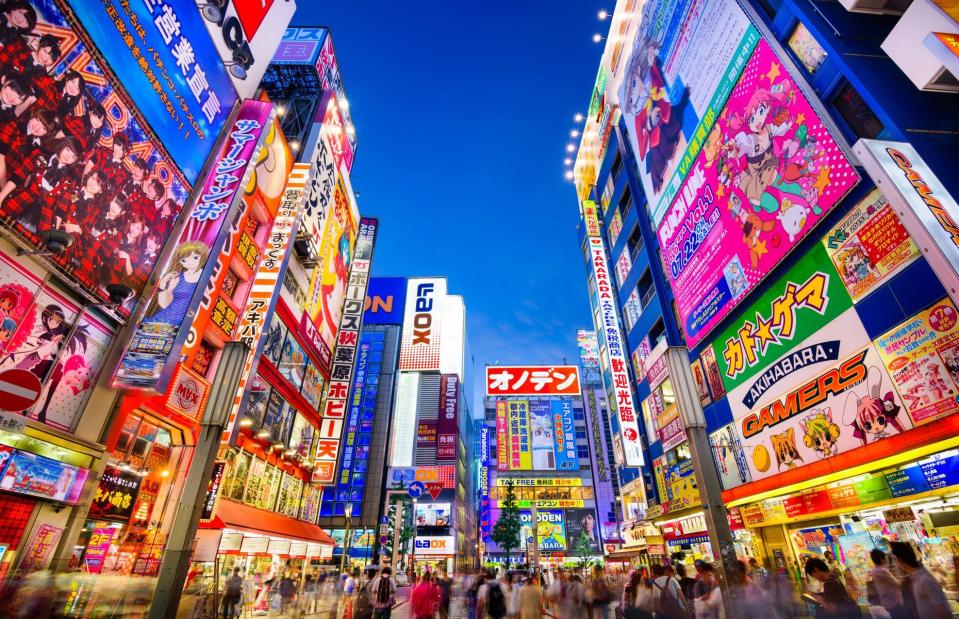
ESB Professional/Shutterstock
Tokyo is home to 298,300 super-rich people (including 267 centimillionaires and 14 billionaires). Its overall high net worth individual (HNWI) population has risen by 8,000 over the last few years, though its number of billionaires has remained constant. Henley & Partners and New World Wealth have previously highlighted Tokyo's comparatively small number of billionaires as evidence of a more even wealth distribution.
The city's super-rich population may have grown, but the Japanese government recently launched a scheme to encourage less wealthy people to move out of overcrowded Tokyo, offering families up to $7,700 (£6k) per child to relocate to less populated areas.
Joint 18. Shanghai, China – 0.82% of the population
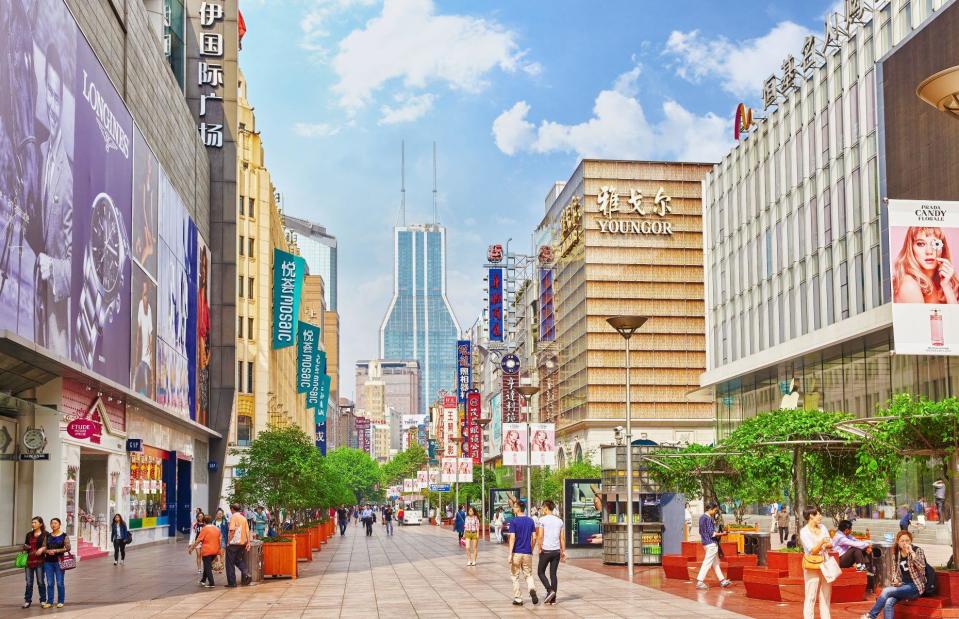
V_E/Shutterstock
Shanghai is the financial capital of China and the country's largest city. It's home to over 29 million people and just over 123,000 of them are HNWIs, accounting for 0.82% of the population.
However, Shanghai is seeing a drop in its number of HNWIs. Its super-rich population tumbled by 5% from 2021 to 2022, with a further 2,900 rich people fleeing the city between 2022 and 2023. According to the latest report, the number of HNWIs has since dropped further from 127,200 to 123,400.
This drop has been attributed to the high number of wealthy Chinese people who are moving their assets out of the country, with many choosing to relocate their wealth to nearby Singapore.
Joint 18. Seoul, South Korea – 0.82% of the population
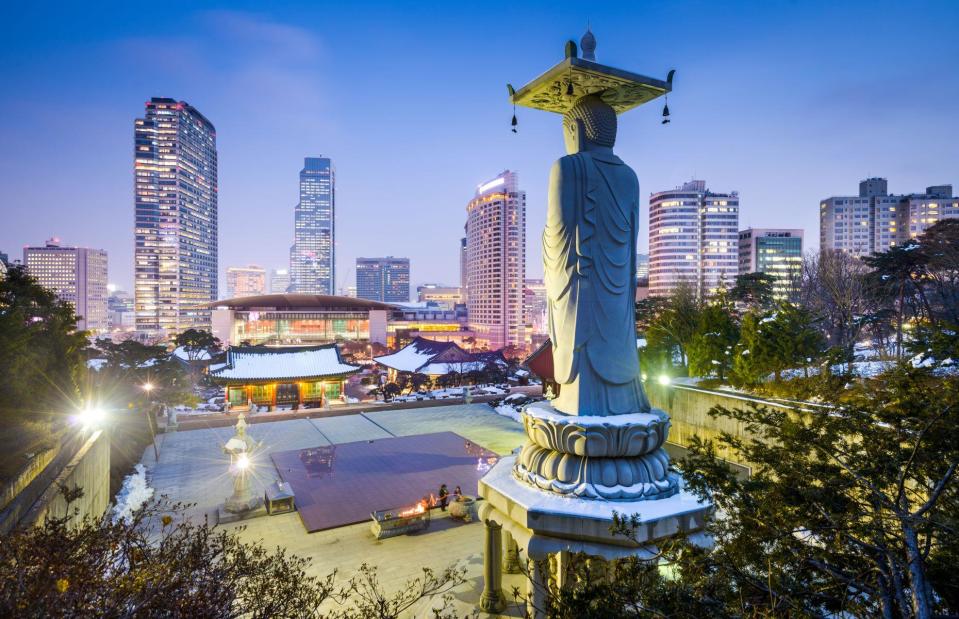
ESB Professional/Shutterstock
Seoul's population of just over 10 million people includes 82,500 super-rich residents, of whom 195 are centimillionaires and 20 billionaires.
According to a report in the Financial Times back in 2020, the South Korean capital "is marketing itself as an alternative to Asia's traditional financial hubs". As part of this effort, the city launched an incentive package for businesses to relocate to the region – and the influx of wealth caused prices in the capital and surrounding suburbs to soar. Property prices in the wealthy suburb of Jamsil, for example, increased by over 100% from 2015 to 2020, reportedly pricing locals out of the market. But is the trend reversing?
The latest dataset shows the number of HNWIs in Seoul has fallen by almost 15,000 over the last year, while the number of centimillionaires has fallen by 34 and the number of billionaires by 4.
17. Paris, France – 1.33% of the population
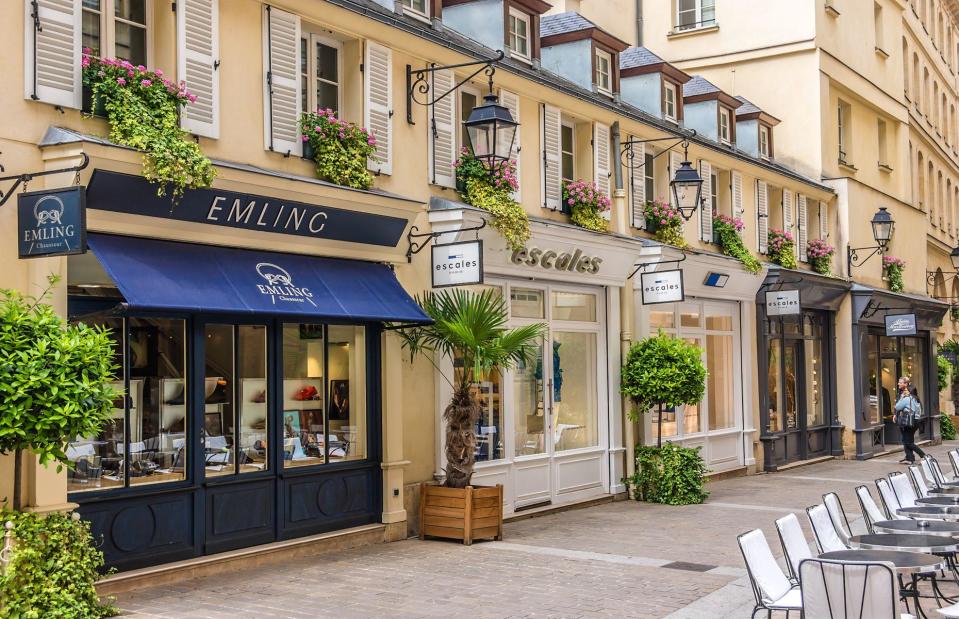
Kiev.Victor/Shutterstock
It might be known as the city of love, but Paris also bears the distinction of being one of the wealthiest cities in the world. With 165,000 HNWIs based in the city and its surrounding region of Île-de-France, around 1.33% of the population is super-rich. This figure includes 286 centimillionaires and 23 billionaires, with Bernard Arnault – the chairman and CEO of luxury goods empire LVMH, who has a staggering net worth of $214 billion (£168bn) and is currently the wealthiest person on the planet – the richest among them.
According to the 2024 Barnes City Index, Paris is the world's fifth most attractive city for the super-rich based on "practical, emotional and financial criteria".
16. Toronto, Canada – 1.65% of the population
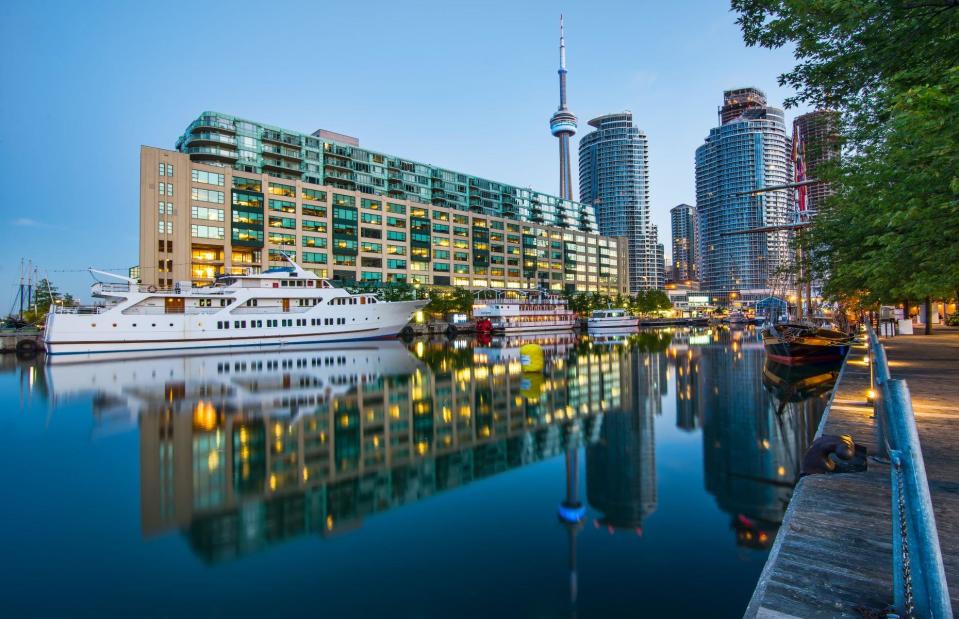
James Wheeler/Shutterstock
Toronto is home to 106,300 super-rich people, an increase of around 1,000 from last year. Among this new total are 195 centimillionaires and 18 billionaires.
Toronto is currently the only Canadian city on this list. However, this might change in the future as the nation is behind one of the most forward-thinking investment migration programmes.
Also known as a "golden visa" programme, the scheme is designed to incentivise HNWIs to move to Canada from overseas. Whereas many countries specify a minimum amount of money a migrant must invest in the local economy, Canada's entry requirements state they must have an "innovative start-up business".
15. Melbourne, Australia – 1.84% of the population
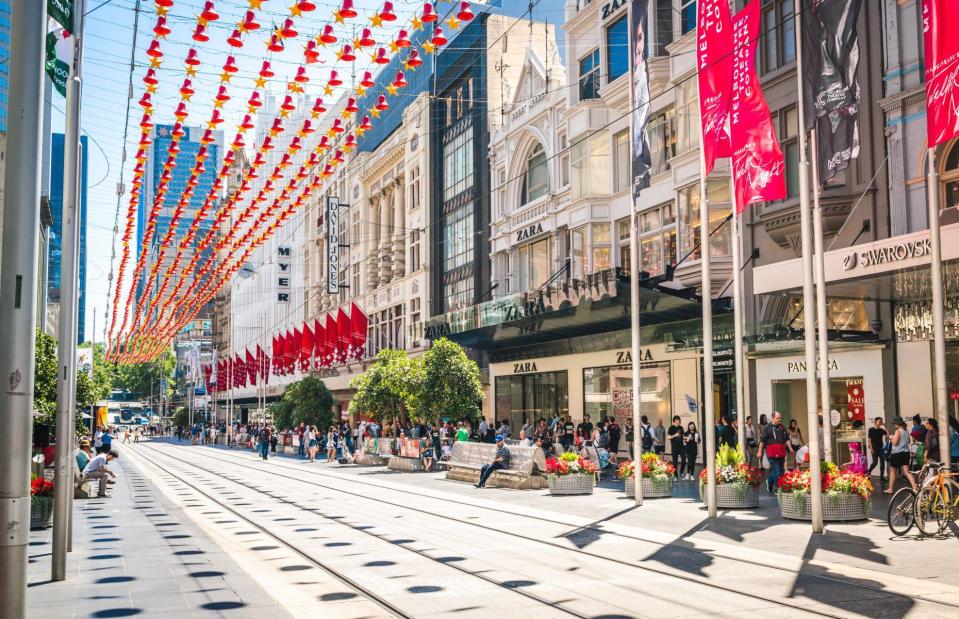
Keitma/Shutterstock
With 97,900 millionaires, Melbourne's community of HNWIs accounts for 1.84% of its population. Like Toronto, the city has seen an increase in its number of HNWIs since last year, with an additional 1,900 making the list in 2024.
Melbourne – which has technically overtaken Sydney as Australia's most populous city – is HQ to some of the nation's largest businesses, including the ANZ banking group, and the mining and metals corporations BHP and Rio Tinto.
Henley & Partners and New World Wealth have described it as a "fast-growing millionaire base" that's "gaining in wealth at a rapid rate".
14. Hong Kong – 1.86% of the population

ssray/Shutterstock
Hong Kong is home to 143,400 HNWIs, including 320 centimillionaires and 35 billionaires. This equates to 1.86% of the city-state's population, a rise from 1.73% last year.
Hong Kong's attractive tax system could explain its growing appeal. Income tax rates are low, and there's no capital gains, sales, VAT, wealth, or net worth tax. Inhabitants also don't need to pay tax on inheritance, financial gifts, or interest income, and there's no withholding tax on dividends paid by Hong Kong-based companies.
13. London, UK – 2.34% of the population
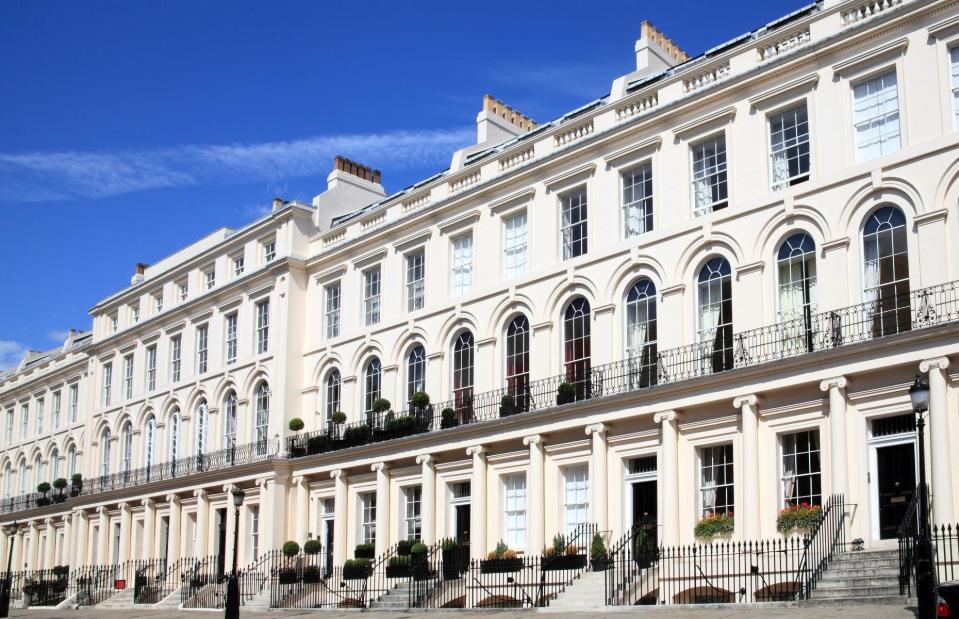
Tony Baggett/Shutterstock
London was the world's wealthiest city for many years, although its HNWI population has dwindled in recent times.
Over the last two years alone, the number of London-based HNWIs has fallen from 272,400 to 227,000, meaning 2.34% of the city's population is now super-rich. Henley & Partners and New World Wealth have suggested various possible reasons for the exodus, including high crime rates in the capital, but it's clear that politics has also played a major part.
In the wake of the Brexit referendum in 2016, more than 400,000 super-rich people left the UK, taking around £1.2 trillion ($1.5tn) with them. The trend has apparently continued; according to The Telegraph, the Labour Party's recent pledge to abolish the UK's non-dom tax laws if elected – which currently allow UK residents whose permanent homes are legally abroad not to pay tax on their UK earnings – has been met with dismay from the country's super-rich, many of whom have supposedly fled to alternative destinations such as Paris.
12. Dubai, UAE – 2.38% of the population
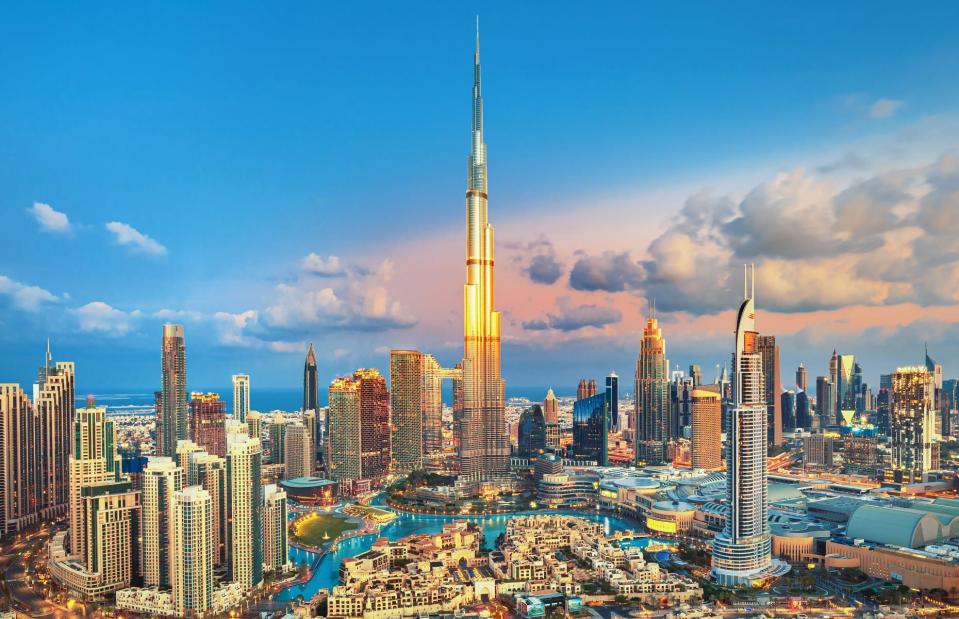
Rasto SK/Shutterstock
The world's wealthy have been relocating to Dubai for years. Although the city only recently made its debut on Henley & Partners' list, its percentage of super-rich residents is pretty high at 2.38% – and the UAE government is keen to encourage more rich people to move in.
Dubai has offered a 10-year 'golden visa' scheme since 2019 but recently expanded it to become more attractive. The renewable visa offers residency to HNWIs such as computer programmers, entrepreneurs, actors, and even high-performing students who have the potential to become HNWIs in the future. Between 2019 and November 2022 the government issued more than 150,000 golden visas, including to sports stars Cristiano Ronaldo and Novak Djokovic.
The city has also seen an influx of super-wealthy Russians, many of whom fled their home country after Putin's invasion of Ukraine. (According to an article in The New York Times, for example, Russians were the biggest non-resident buyers of Dubai real estate in 2022). But Dubai is evidently universally attractive. The 2024 Barnes City Index has crowned Dubai as the world's most sought-after destination for the super-rich, with Indians and Europeans alike scrambling to buy property in the city last year.
11. Sydney, Australia – 2.84% of the population
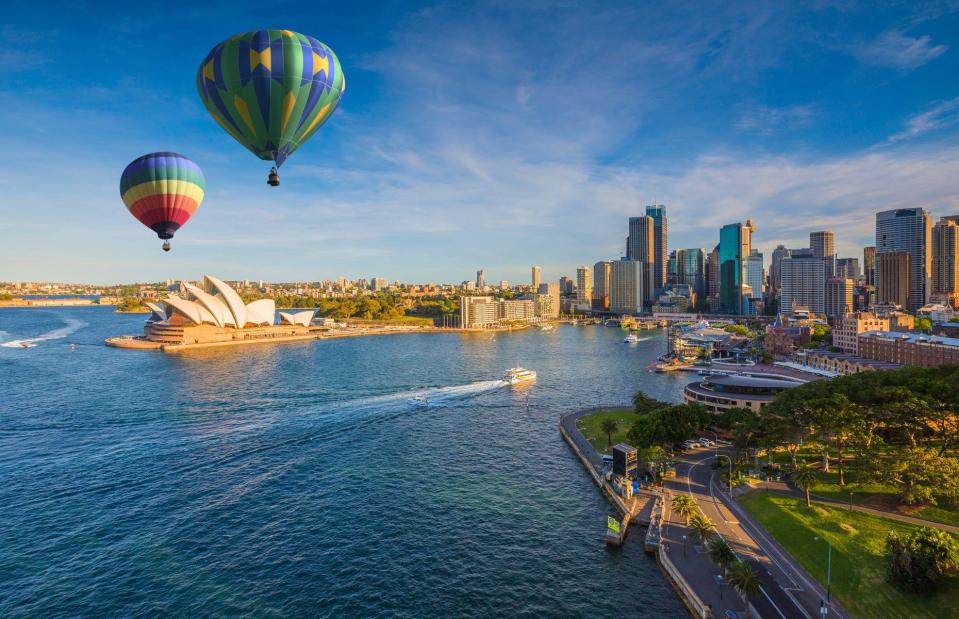
structuresxx/Shutterstock
Sydney is the second Australian location on our list. With 147,000 millionaires, equating to 2.84% of the city's population, it's seen quite a spike in its HNWI population. According to Henley & Partners' previous report, there were 126,900 millionaires living in Sydney in 2023, which means over 20,000 have made the city their home in the last year.
This isn't reflected in whole-state data. According to the Sydney Herald in May 2023, New South Wales is expected to lose 124,000 residents over the next few years – but with poor conditions for workers widely cited as the reason, it's likely the super-rich aren't affected.
Indeed, Henley & Partners and New World Wealth have previously predicted that Sydney will be one of the top five cities with the most rich residents by 2040.
10. New York, USA – 3% of the population
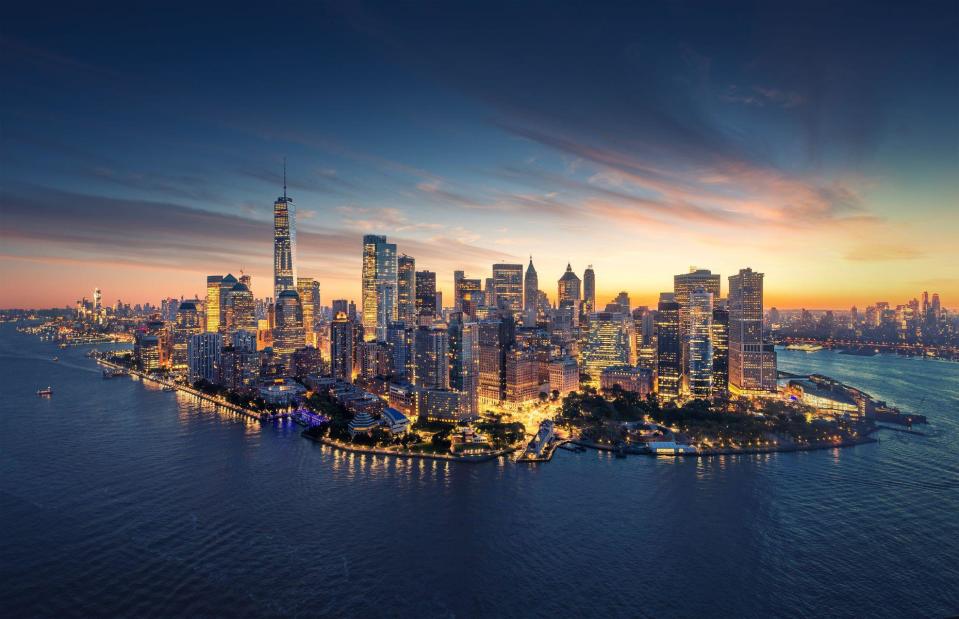
IM_photo/Shutterstock
When it comes to sheer numbers, New York has the most HNWIs of anywhere in the world with 349,500, an increase of 9,500 over the last year. This includes 744 centimillionaires and 60 billionaires, up from 724 and 58 respectively.
Total private wealth in the Big Apple exceeds a massive $3 trillion (£2.4tn), and the city hosts both of the globe's largest stock exchanges by market cap: NASDAQ and the Dow Jones. And according to a report in Business Insider, New York is only getting richer.
Although NYC residents who earn under $172,000 (£135k) are fleeing the city in their droves, millionaires are steadily moving in (despite income tax hikes in 2021). With the city's cost of living sky-high, it seems only the super-rich can afford to stay, meaning the population demographic is shifting.
9. Amsterdam, Netherlands – 3.82% of the population
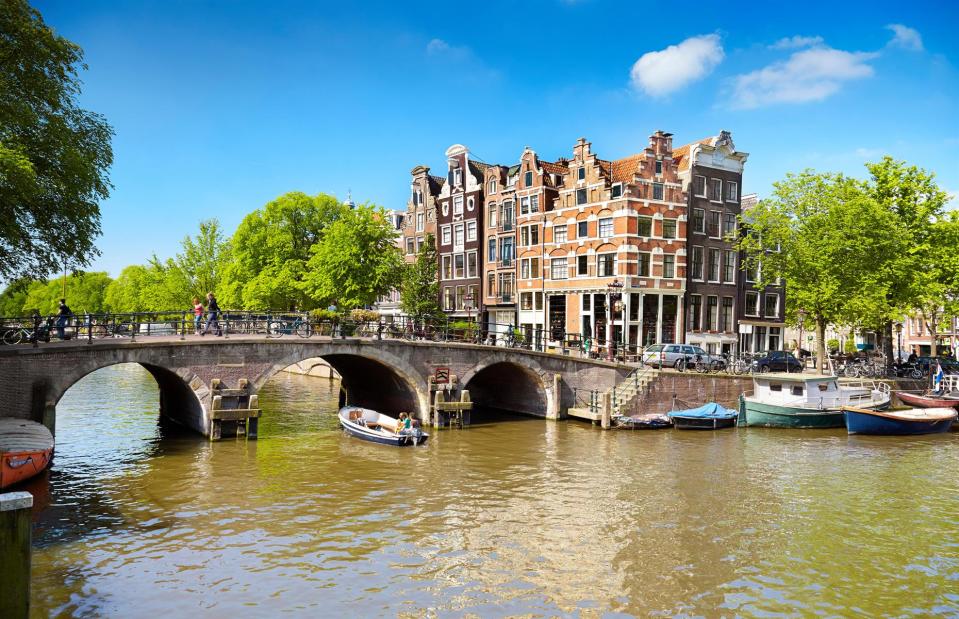
Jan Wlodarczyk / Alamy Stock Photo
A relative newcomer to the list, the Dutch city of Amsterdam counts 45,200 HNWIs amongst its population. These include 91 centimillionaires and nine billionaires, meaning 3.82% of the people living there have at least seven figures in their bank accounts.
According to the Quote 500, a list compiled by the Dutch magazine Quote, the number of HNWIs in the Netherlands has been increasing since 2021. One partial explanation for this, as with many of the European cities on the list, is Brexit, with wealthy Brits seeking to relocate their assets to the EU. Another explanation is the Netherlands' attractive three-year residence permit, available to people who invest at least €1.25 million ($1.4m/£1.1m) into a Dutch business.
8. Houston, USA – 3.94% of the population
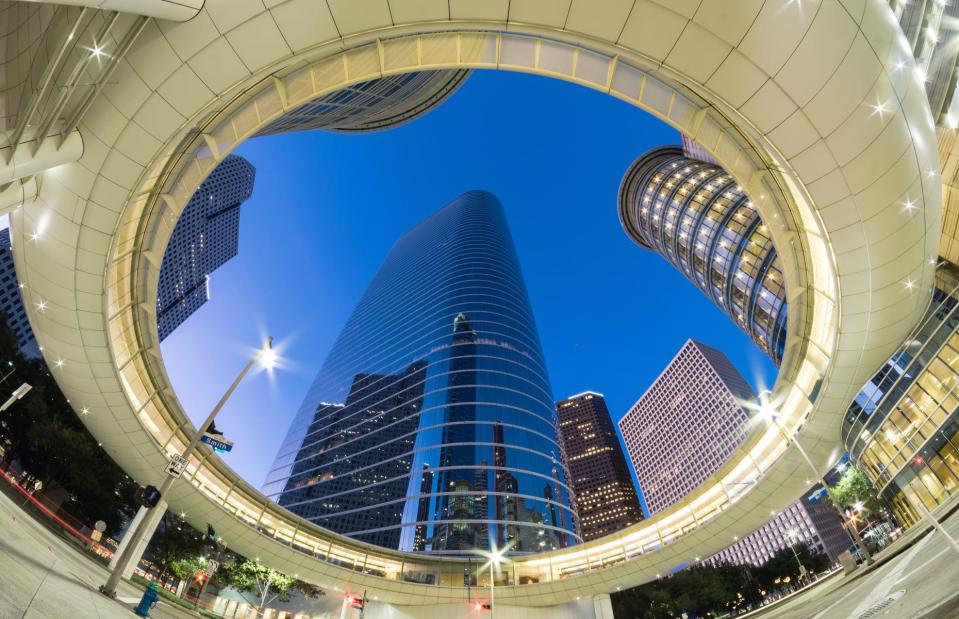
Trong Nguyen/Shutterstock
Houston might be "one of the world's fastest growing cities", according to Henley & Partners and New World Wealth, but its rich population has come crashing down. In 2022, 132,600 HNWIs called Houston home. Today, that number is just 90,900, including 258 centimillionaires and 18 billionaires. In the last year alone, the city has lost 7,600 millionaires, 22 centimillionaires, and two billionaires.
The rapid decline comes after years of growth, with the city's HNWI population increasing by 70% since 2013. This could be part of a national trend; according to Henley & Partners, American millionaires are more likely than their counterparts around the world to seek a second passport or alternative residence, with factors such as "civil unrest and brazen political attacks on democracy... coupled with eroding social cohesion" suggested as the root cause.
The firm, an investment migration consultancy, said it received a record number of enquiries from American clients in 2023. Compared to 2019, the number of US enquiries it received skyrocketed by a whopping 504%.
Joint 6. Singapore – 4% of the population
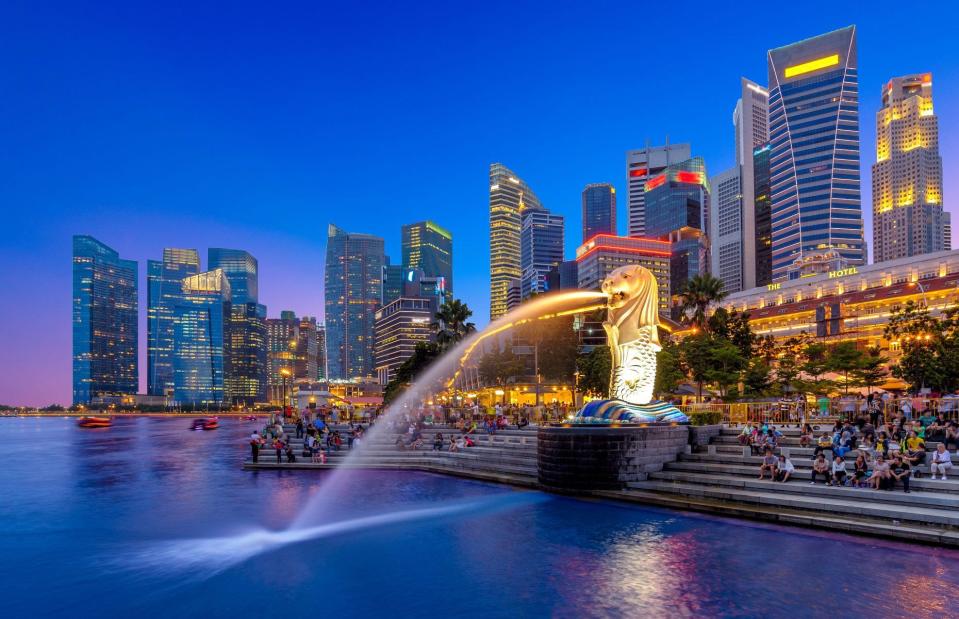
Richie Chan/Shutterstock
Singapore has the joint sixth-highest percentage of super-rich locals. The city state is home to 244,800 HNWIs, including 336 centimillionaires and 30 billionaires, which translates to 4% of its population. Henley & Partners and New World Wealth have previously described the city as "one of the top destinations for migrating millionaires", with a report by Business Insider suggesting that Singapore's low corporate tax rate of 17% could be a key motivation behind this.
The founder of Singaporean corporate services Jenga, Iris Xu, has said that wealthy Chinese people flocked to Singapore in the face of local COVID-19 restrictions, drawn to the city by its attractive global investor programme that enables people who invest at least 2.5 million Singaporean dollars (around $2m/£1.6m) to apply for permanent residency. And though pandemic-era restrictions may be over, the trend of migration has continued; a report by the consultancy Knight Frank has even predicted Singapore will see a 17.7% increase in its number of HNWIs up until 2027.
Joint 6. San Francisco Bay Area, USA – 4% of the population
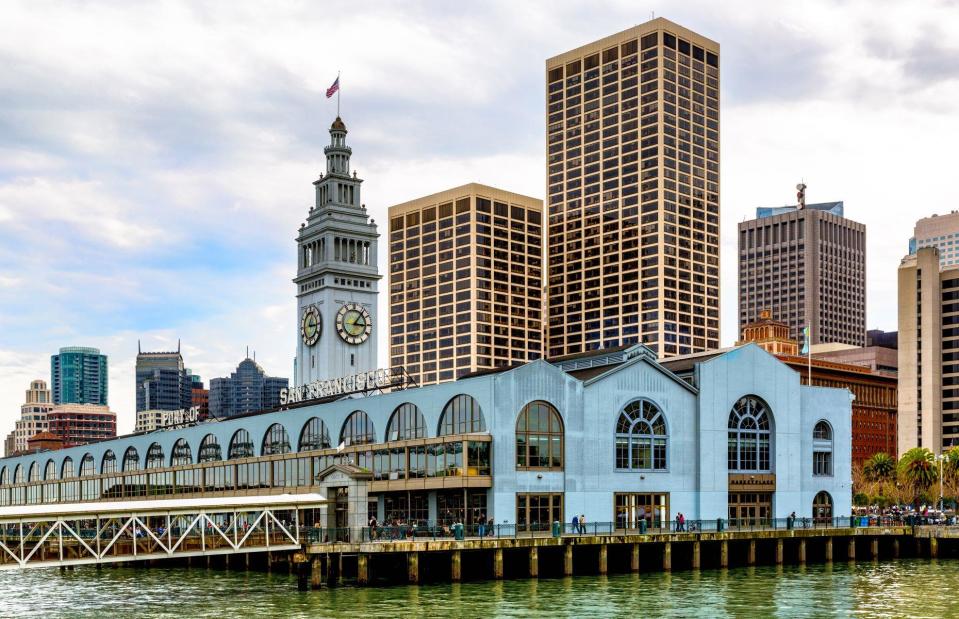
cdrin/Shutterstock
The San Francisco Bay Area is home to 305,700 super-rich people, an increase from 285,000 last year. This translates to just over 4% of the population. But while the number of HNWIs is rising, it's not yet reached the heights Henley & Partners and New World Wealth were expecting...
In its 2022 report, Henley & Partners and New World Wealth revealed they believed the region, which includes San Francisco and Silicon Valley, would boast more rich residents than any other city by 2024. This isn't the case – New York takes the crown with 349,500 millionaires, according to the latest data – but the Bay Area does boast the highest number of billionaires. It's home to 68 at the last count, an increase of five from 2023.
5. Chicago, USA – 4.65% of the population
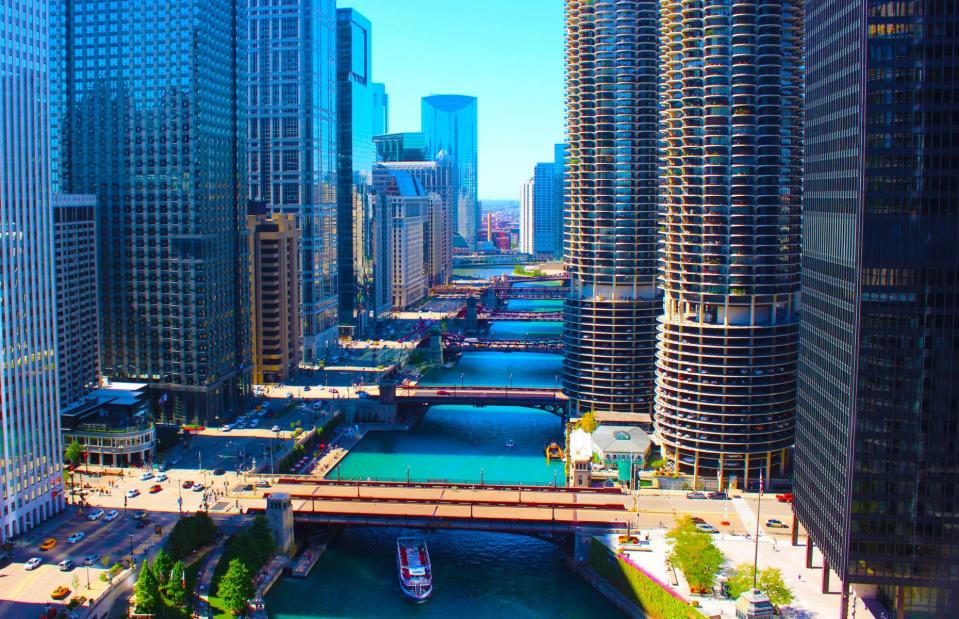
moondogpro/Shutterstock
Another American city to feature on the list is Chicago, with a HNWI population of 120,500. This figure includes 290 centi-millionaires and 24 billionaires. However, some of its super-rich residents are starting to move elsewhere...
Among them is hedge fund billionaire Ken Griffin. With a net worth of $37.8 billion (£29.7bn), Griffin was once the wealthiest man in Chicago according to Headline USA, but moved to Florida in June 2022. He took his business Citadel Securities with him, citing the high crime rates and former Mayor Lori Lightfoot's reluctance to tackle the problem as his motivation for relocating.
Griffin is apparently part of a trend; according to the report from Henley & Partners and New World Wealth, the number of millionaires in Chicago fell by 4% from 2021 to 2022, and a further 39,600 HNWIs have left the city since then. That said, millionaires still account for an impressive 4.65% of the population.
4. Los Angeles, USA – 5.66% of the population
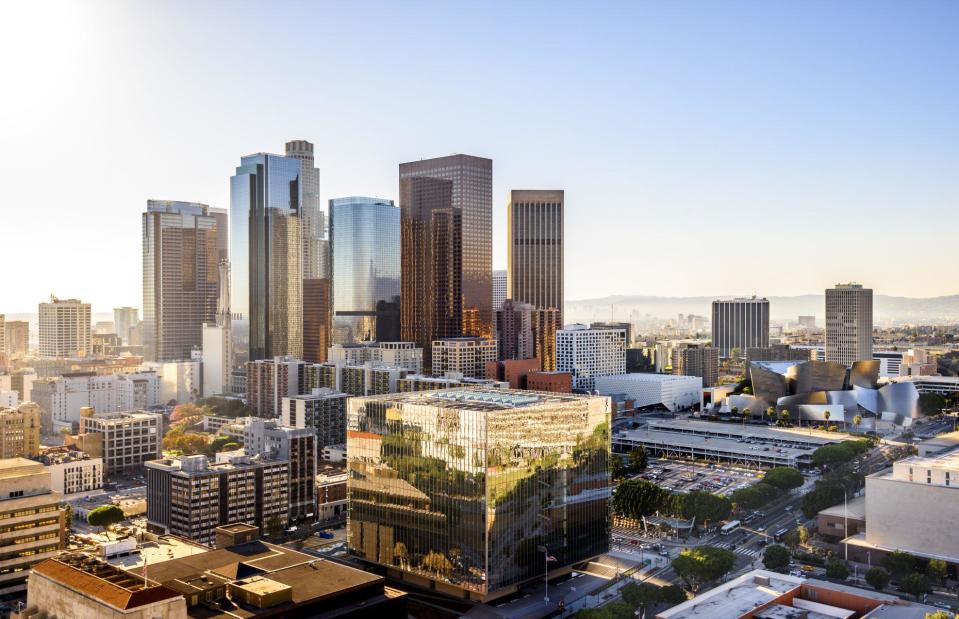
Chones/Shutterstock
Home to Hollywood, Los Angeles boasts 212,100 super-rich people among its residents. Of these, 496 are centimillionaires while 43 are billionaires. These include the director Steven Spielberg, who has a net worth of $4.8 billion (£3.8bn).
According to the numbers, LA is one of the few cities on this list that's seen an increase in its HNWI population. Data from Henley & Partners and New World Wealth in 2023 showed the city boasted 205,400 HNWIs, including 480 centimillionaires and 42 billionaires. That means an additional 13,000 rich people now live in the city – but why?
The region might be world-famous for its entertainment industry, but it's also a major financial hub. Statista shows the city is the sixth most attractive financial centre in the world, based on criteria that include business environment, reputation, and infrastructure.
3. Frankfurt, Germany – 11.8% of the population

GagliardiPhotography/Shutterstock
Germany has the largest economy in Europe and, as the home of the European Central Bank, Frankfurt has been the financial hub of the EU for years. However, according to Henley & Partners and New World Wealth, the number of super-rich people living in the city actually decreased by 3% from 2021 to 2022 – and this trend has continued, with the city's HNWI population falling from 117,400 to 94,500 in the following two years. This is despite reports that British millionaires have been relocating from the UK in the wake of Brexit, with Frankfurt supposedly a popular destination.
Although this still means an impressive 11.8% of Frankfurt's population are HNWIs, putting it in third place on our list, it could be that high tax rates are to blame for the recent decline. Super-rich residents of Frankfurt are subject to Germany's "rich tax" (Reichensteuer) which sees people with an income of over €277,826 ($304k/£241k) lose 45% of their money to income tax.
2. Geneva, Switzerland – 13.6% of the population
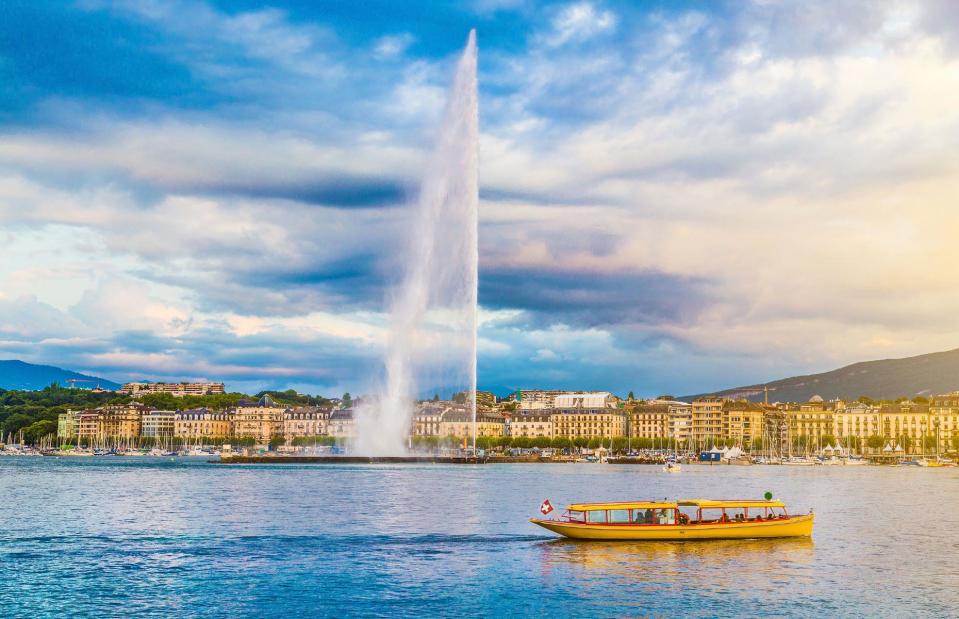
canadastock/Shutterstock
Measuring just over six square miles (16 square kilometres), Geneva has the second-highest geographic concentration of super-rich people of any city on Henley & Partners and New World Wealth's list.
Located in the French-speaking part of Switzerland, it's home to 79,800 HNWIs, including 244 centimillionaires and 14 billionaires. This represents quite a dip from 2022, when the city was home to 90,300 HNWIs, of whom 345 were centimillionaires, and 16 were billionaires.
Geneva's declining population of wealthy residents is nothing new. According to reports, rich people have been leaving the city for over a decade. Between 2010 and 2018, for example, Geneva lost 11% of its biggest taxpayers, with some experts blaming high tax rates for the exodus. Indeed, at a staggering 44.8%, Geneva has the highest tax rate for top incomes of any canton in Switzerland.
1. Zurich, Switzerland – 14.7% of the population
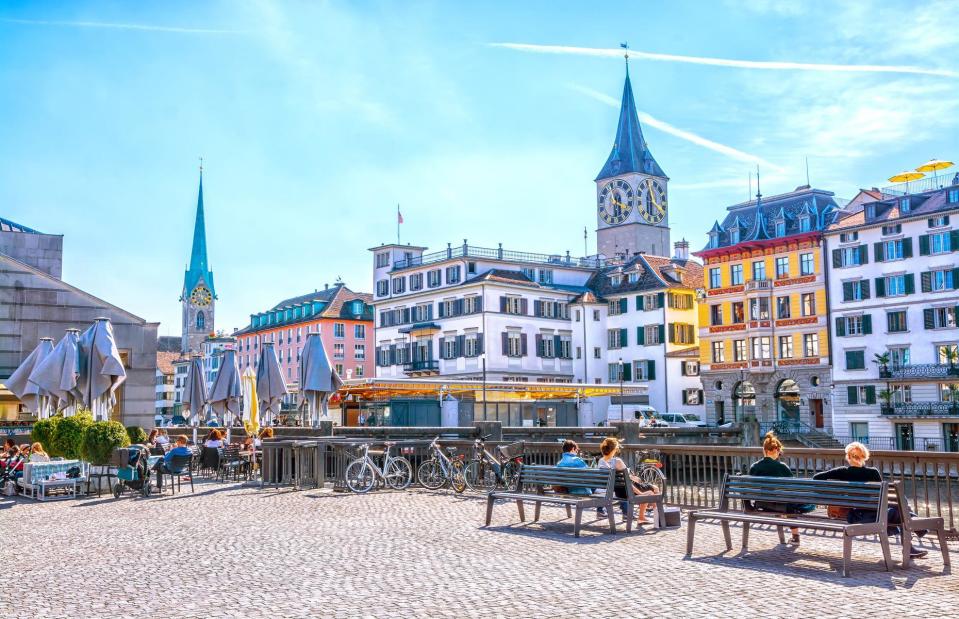
Marina Datsenko/Shutterstock
At the top of our list, Zurich is one of the banking capitals of the world – and historically a tax haven too.
As well as hosting some of the world's biggest financial companies, including Credit Suisse, Julius Baer, and UBS, the canton is home to the world's highest percentage of super-rich residents: 88,500 millionaires, of which 205 are centimillionaires and 10 are billionaires. This equates to almost 15% of the population.
Over the last two years, Zurich's total number of HNWIs has fallen from 105,100, a loss of 16,600 since 2022. It might boast the top spot on our list but, like Geneva, it's clearly losing favour with super-rich residents. Back in 2021, Zurich was ranked the favourite city of the world's wealthy by the Barnes City Index but hasn't even placed in the top 10 in more recent years.
Now discover the world’s most expensive countries to live in

 Yahoo Finance
Yahoo Finance 